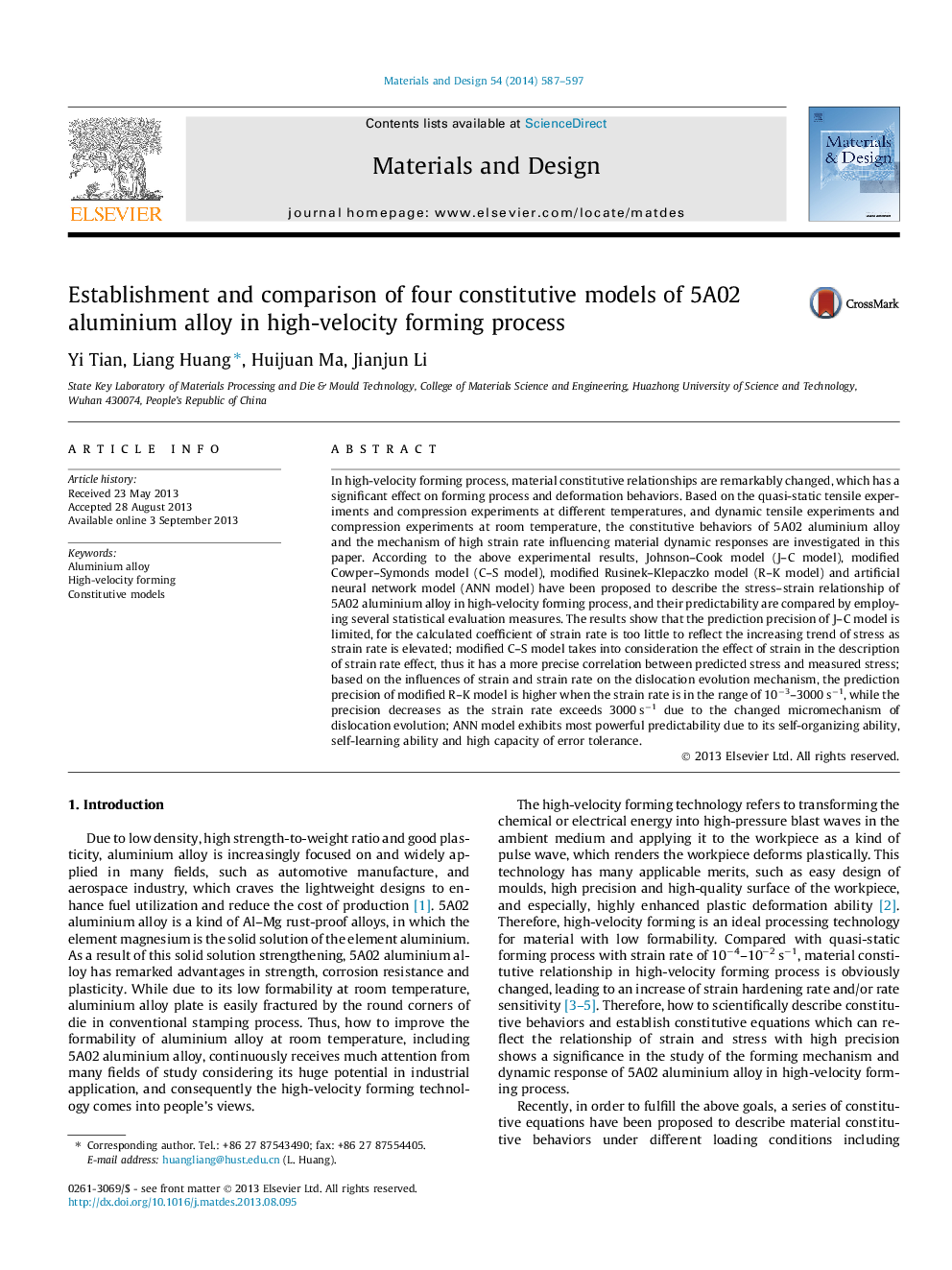| Article ID | Journal | Published Year | Pages | File Type |
|---|---|---|---|---|
| 829678 | Materials & Design (1980-2015) | 2014 | 11 Pages |
•The calculated coefficient of strain rate by J–C model is too little.•Modified C–S model incorporates strain into strain rate function.•Predictability of modified R–K model decreases when strain rate exceeds 3000 s−1.•ANN model has the highest prediction precision.•Rank of predictability: ANN model > modified C–S model > modified R–K model > J–C model.
In high-velocity forming process, material constitutive relationships are remarkably changed, which has a significant effect on forming process and deformation behaviors. Based on the quasi-static tensile experiments and compression experiments at different temperatures, and dynamic tensile experiments and compression experiments at room temperature, the constitutive behaviors of 5A02 aluminium alloy and the mechanism of high strain rate influencing material dynamic responses are investigated in this paper. According to the above experimental results, Johnson–Cook model (J–C model), modified Cowper–Symonds model (C–S model), modified Rusinek–Klepaczko model (R–K model) and artificial neural network model (ANN model) have been proposed to describe the stress–strain relationship of 5A02 aluminium alloy in high-velocity forming process, and their predictability are compared by employing several statistical evaluation measures. The results show that the prediction precision of J–C model is limited, for the calculated coefficient of strain rate is too little to reflect the increasing trend of stress as strain rate is elevated; modified C–S model takes into consideration the effect of strain in the description of strain rate effect, thus it has a more precise correlation between predicted stress and measured stress; based on the influences of strain and strain rate on the dislocation evolution mechanism, the prediction precision of modified R–K model is higher when the strain rate is in the range of 10−3–3000 s−1, while the precision decreases as the strain rate exceeds 3000 s−1 due to the changed micromechanism of dislocation evolution; ANN model exhibits most powerful predictability due to its self-organizing ability, self-learning ability and high capacity of error tolerance.
